Classic Covers: The Art of Speeding
So you’re feeling sorry for yourself because you got a speeding ticket. Well, maybe it will help to know that speeding is nothing new. Okay, maybe it won’t help, but you’ll have a great time looking at these old Post and Country Gentleman covers.
Speeding Oldsters by Wm. Meade Prince
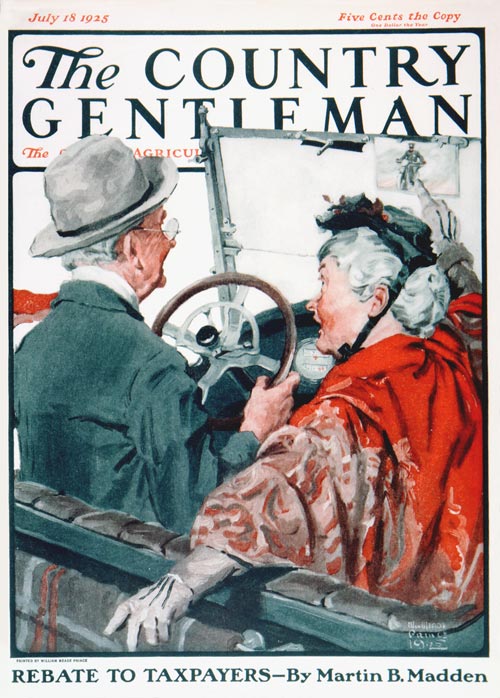
Wm. Meade Prince
July 18, 1925
© SEPS.
“Henry! I TOLD you we were going too fast!” Who knew there were motorcycle cops in 1925? Well, there’s one in this rear-view mirror. The Country Gentleman magazine was a sister publication to The Saturday Evening Post. On this cover, Henry is clearly having the time of his life, tooling along at thirty miles per hour. Fun’s over, buddy.
Elderly Couple in Automobile by Robert Robinson
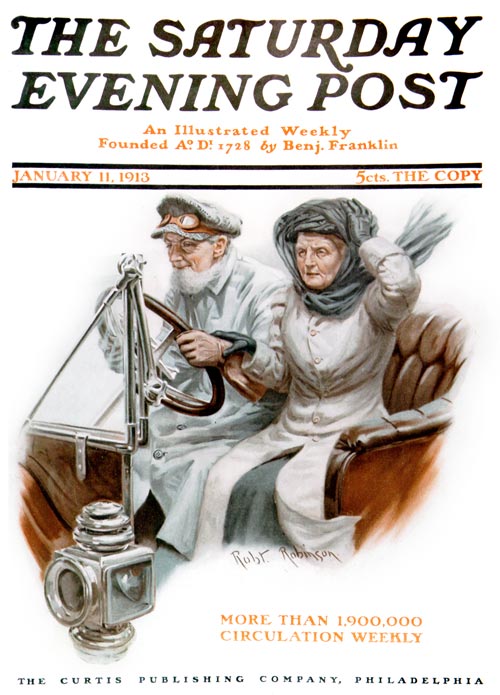
Robert Robinson
January 11, 1913
© SEPS.
What is with the oldsters these days? At least the men. We’ve shown you some delightful old codgers by artist Robert Robinson in the past, and this one has a lead foot. And he’s scaring the wits out of the Mrs. She has a restraining hand on his arm, but seems too scared to say anything. But just wait and see if the old fool gets his supper tonight.
Exhilaration by Norman Rockwell
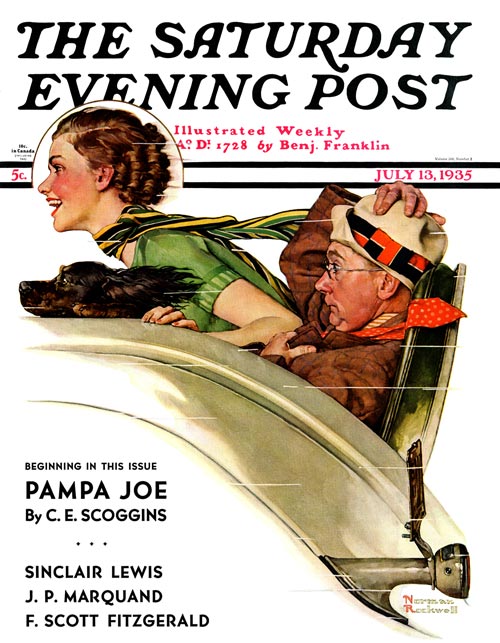
Norman Rockwell
July 13, 1935
© SEPS.
Who’s enjoying the speeding now? Rockwell turns the tables and shows a young lady who is thrilled at the wild rumble seat ride. The dog, too, seems to enjoy the wind in his ears. The poor guy, however, is just trying to hang on to his hat. If you slow down enough to read the cover notes, you’ll see that the Post boasted some pretty impressive writers, too.
Excuse My Dust by Norman Rockwell
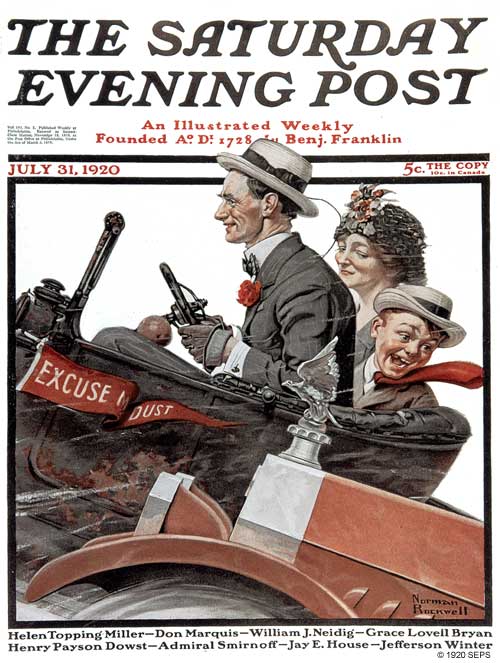
Norman Rockwell
July 31, 1920
© SEPS.
This family is pretty impressed that their Ford is outrunning the fancy-schmancy, more expensive car. The models were the Campion family from New Rochelle, where Norman Rockwell lived. Rockwell often used friends and neighbors for his paintings. Dave Campion ran a news store. We would have loved to see the customer’s faces when they purchased their copy of the Post with Mr. Campion speeding by on the cover! We’ll see him again.
World’s Fair or Bust by John E. Sheridan
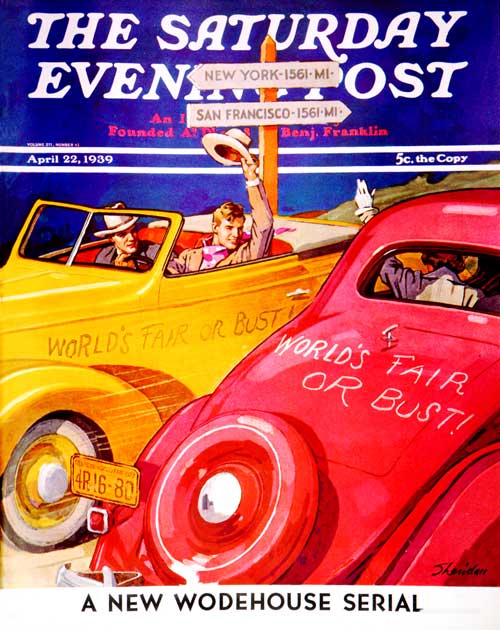
John E. Sheridan
April 22, 1939
© SEPS.
Love this colorful cover. Apparently there was something going on in New York in 1939, and the men in the yellow car are in a hurry to get there – “World’s Fair or Bust”. The lady in the other car evidently didn’t “bust,” we’re happy to report, and is returning from the fair. Let’s hope the speeding guys don’t get bust–ed. Okay, that’s a reach, but I couldn’t help but notice that the long arm of the law awaits (below).
Welcome to Elmville by Norman Rockwell
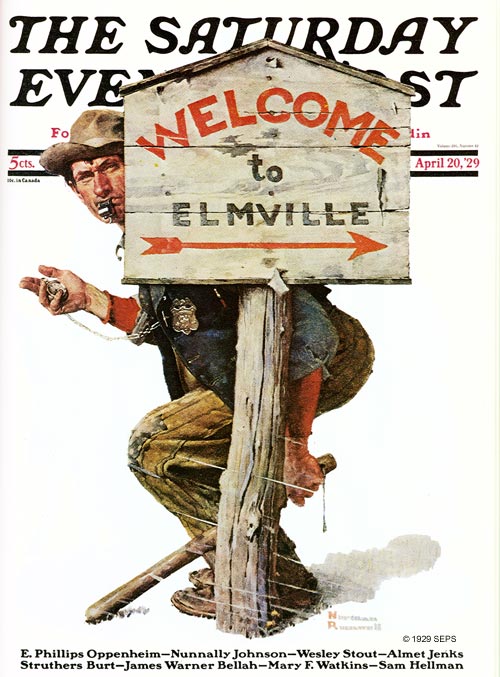
Norman Rockwell
April 20, 1929
© SEPS.
Meet the long arm of the law. Look familiar? The squinty eyes threw me off, but it’s our old buddy Dave Campion, taking time off from his newsstand once again to pose for Rockwell (see Excuse My Dust above). The idea for the painting came from a real-life incident. Rockwell was traveling through Amenia, New York “back in the days when towns paid their taxes with speeders’ fines, and the Amenia cop really nailed me—right along the welcome sign!” So as you bemoan your speeding ticket, dear reader, remember that you are in good company.
Classic Covers: 100 Years Ago
Adding to the sea of smart phones, e-books, and online social networking, analysts are busy predicting what this year, this decade, and this century will bring. But it’s important to stop, rewind, and reflect on how far we’ve come. Imagine life 100 years ago. Here we take a look at how artists were interpreting American culture for the covers of The Saturday Evening Post. You may be surprised to learn that the things we most enjoy have, in essence, remained the same.
People fought the bitter cold in January; went to school and baseball games; and went swimming in July. Well, the bathing suits were a little different …
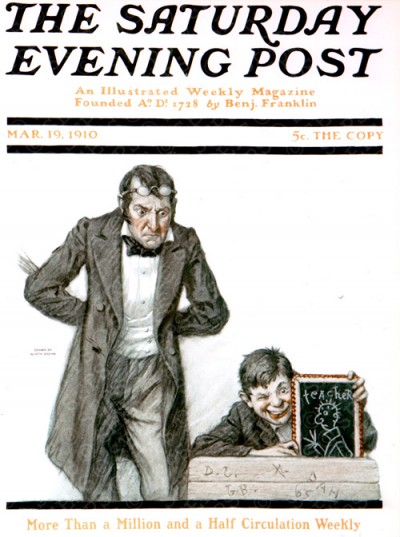
Worth Brehm
March 19, 1910
Life in 1910
Northerners can relate to an artist named Robert Robinson, who did the most delightful paintings of old gentlemen (some say old geezers, but we prefer to be nice). This gent is peering through fogged-up specs at a temperature that seems to be hovering around 14 degrees. We’re not sure where his is. Minnesota, Michigan, New York? But we do know the cover is from January 8, 1910.
It’s getting a bit chilly in the classroom, too. The schoolmaster is about to descend on an unwitting student. Unlike the 2010 teacher, we suspect this one was unconcerned with a “politically correct” punishment. In other words, the boy probably got walloped.
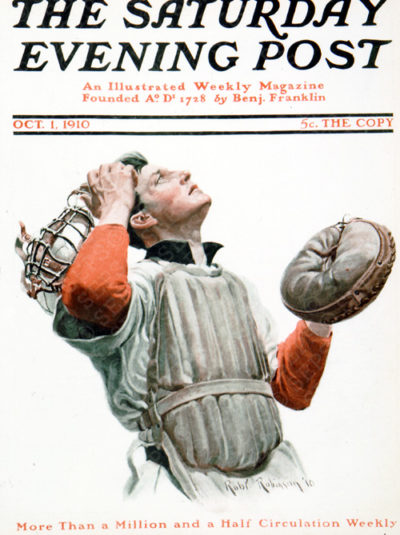
Robert Robinson
October 1, 1910
Yes, folks, there was baseball in 1910! And it made the cover of The Saturday Evening Post with an engaging cover (also by artist Robinson) of a catcher wondering “where’d it go?!” Check out the nifty catcher’s mitt.
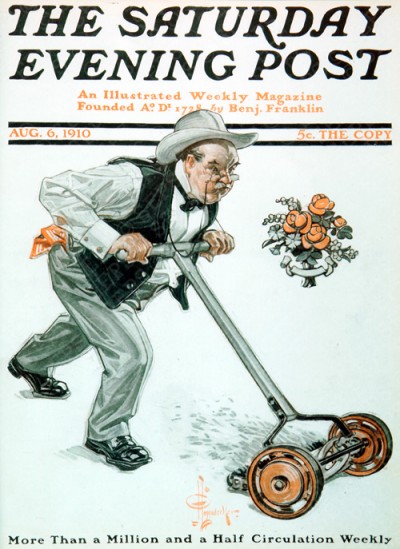
J.C. Leyendecker
August 6, 1910
In summer, Americans not only played baseball, they mowed lawns, too. (Sound familiar?) The gent in the August cover from famous artist J.C. Leyendecker is working away with a push mower, unaware of how “green” his method of grass control is. Who knew lawn care 1910 style would be fashionable again 100 years later? Although we suspect few of us are mowing our lawns in a vest and tie these days.
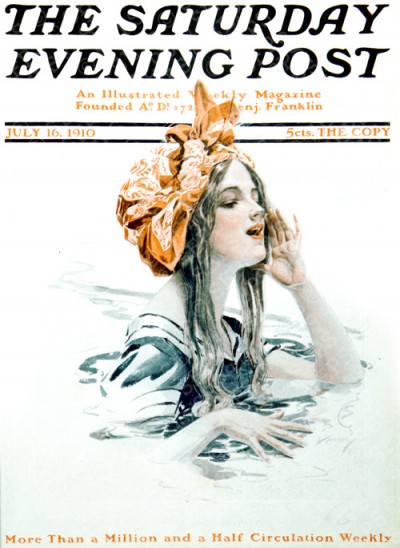
Harrison Fisher
July 16, 1910
And we don’t mean to be scandalous, but we cannot leave without warming you up with illustrations of ladies’ swimwear—1910 style, of course. The girl on the July cover is calling out to friends while swimming. You can tell the sleeves and proper head covering of her swimming costume is not holding her back.
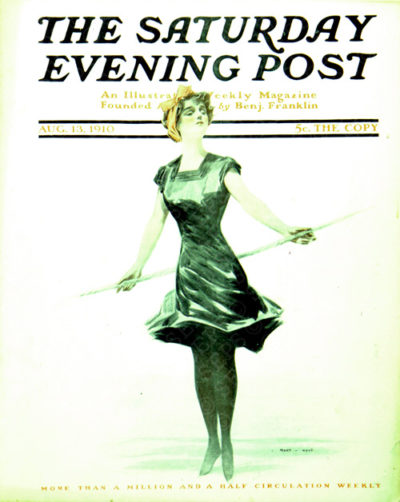
Henry Hutt
August 13, 1910
A full view of swimming attire follows the next month with a Henry Hutt painting. As you can see, fashions may come and go, but our favorite American pastimes remain in tact.